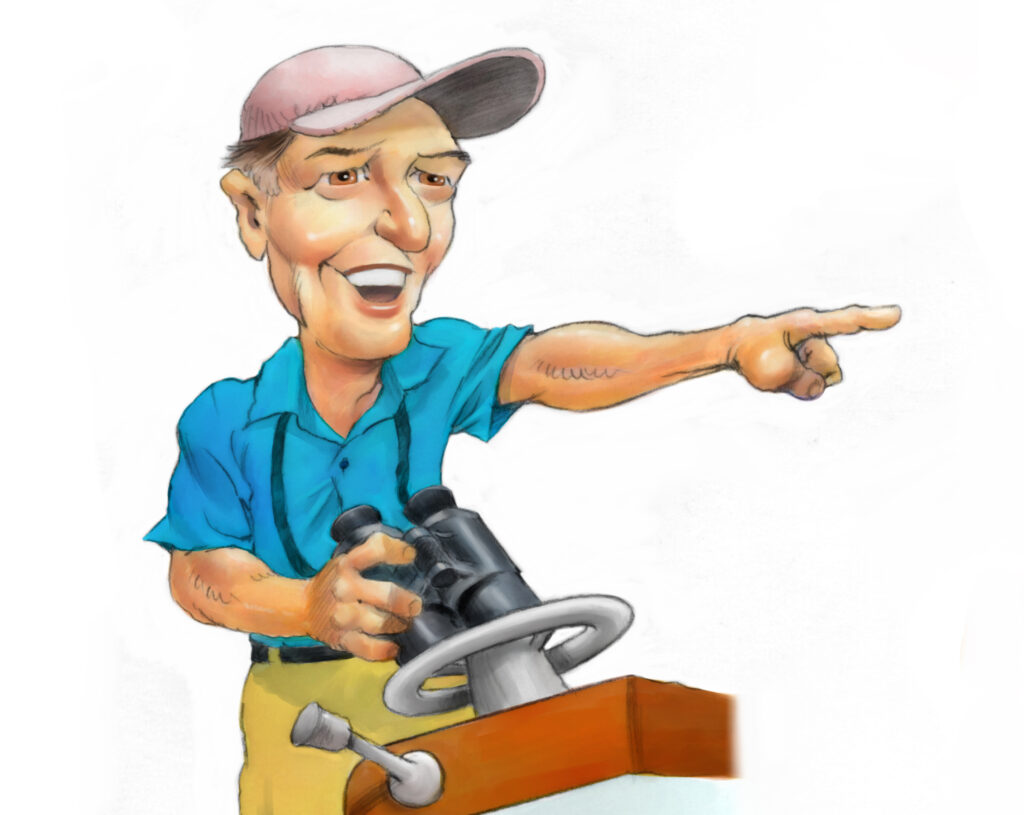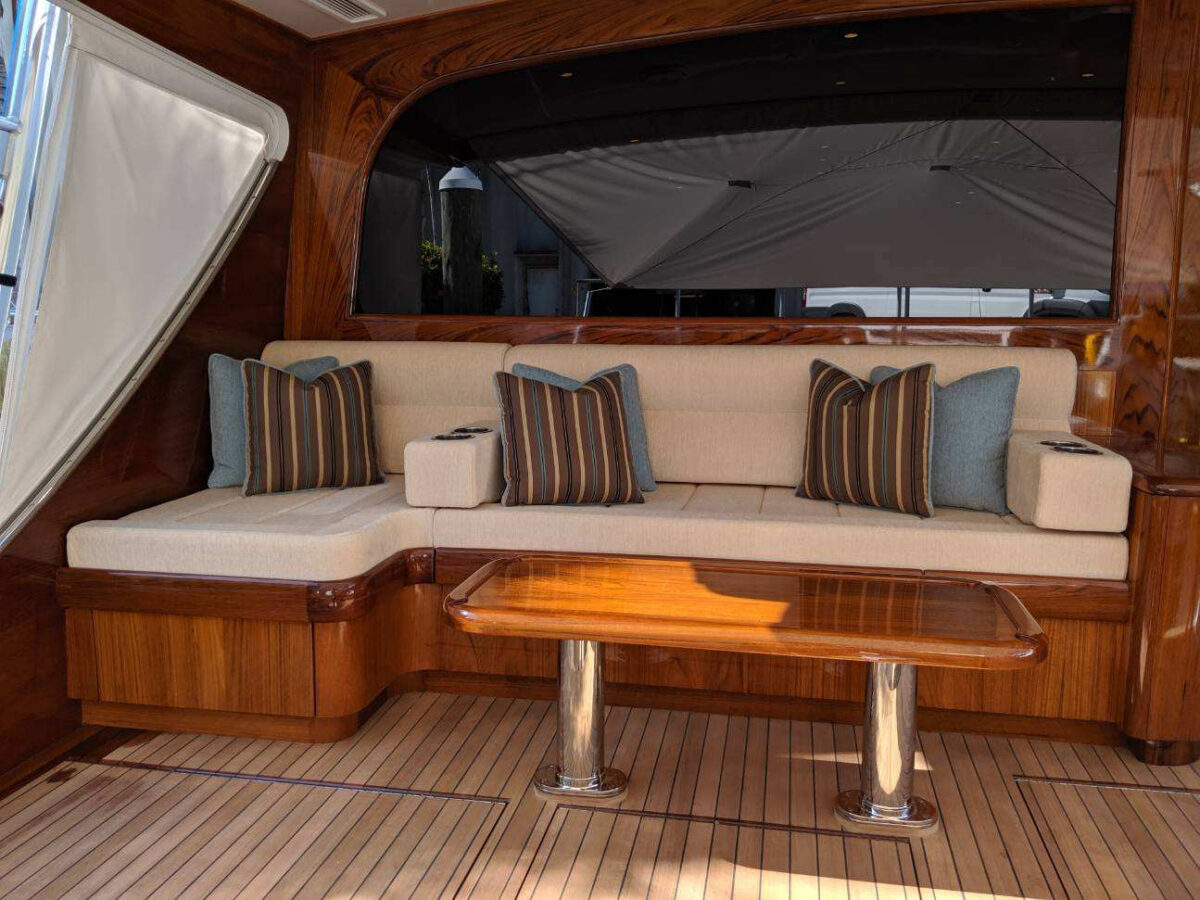Understanding Ride Quality in High-Performance Boats
How does one describe the experience of a ride on a high-performance boat? Top speed, handling, response around the dock, dryness of ride, and the list goes on. One critical feature of performance craft is seakeeping, but that can mean many different things. Nobody wants a boat that slams, so let’s look into ride quality and see what factors help ensure a soft ride.
The Dynamics of Ride Quality
The topic of ride quality is quite deep with details requiring discussion beyond the scope here. Also, the marine environment is dynamic and multiple conditions are always in play, which directly affect ride, including wind, wave height, wave period, etc. So here, we’ll look at ride quality in a general sense and cover some practical design approaches and hull design features while removing seaway conditions from the equation (though expected operational conditions should always be taken into account during a design).
Design Variables in Hull Performance
Multiple design variables come into play when designing a high-performance hull like a modern sportfishing yacht. These include length-to-beam ratio, deadrise distribution, section shape, and bottom loading, among other less important ones. It is the job of the designer to strike a balance between these hull features. Sure, you could maximize top speed by having a hull bottom with low deadrise. Or you could enhance seakeeping by going super-high deadrise. But then resistance goes up and interior volume suffers. Balance is key. This includes allowing for operation on calm water and in waves.
The Impact of Vessel Motions
Motions on waterborne vessels in a seaway are complicated, especially in a confused sea. Motions include terms like surge, heave, roll, pitch and yaw. The hull will move in and rotate about all three axes. The passenger feels acceleration in any of the three directions: longitudinal, transverse and vertical. The well-known equation applies:
F = ma
Force equals mass times acceleration. So, acceleration equals force divided by mass. The mass of the boat is basically constant in this discussion, so the higher the force, the higher the acceleration the craft experiences and the passenger feels. By far, the most impactful variable for ride quality is vertical acceleration. How to measure, track, predict and ultimately reduce, vertical acceleration is the focus of much study and testing. This is especially important with high-speed military applications, say for example with patrol craft, where slowing down is often not an option. One eye-opening statistic is that 100 percent of all operators of high-speed military craft suffer some sort of injury due to vessel motions, be it broken ankles, spinal issues, cracked teeth, the list goes on.
Key Design Considerations for High-Speed Hulls
From a hull design sense, the prime players that impact ride quality include length-to-beam ratio, deadrise distribution, section shape and hull bottom loading. Again, balance is key. High-speed hulls require relatively high deadrise. But if length-to-beam is too small, beam loading and overall hull bottom loading are too light, resulting in unwanted pounding. Bottom loading is basically the amount of running surface that supports the overall displacement, or weight, of the vessel. Too heavy means sluggish helm response and possible dynamic instability, while too light can mean slamming. With larger yachts, say sportfishers in the range of 80 feet LOA and up, bottom loading consideration becomes a bit less impactful. As these boats are heavy enough (high mass), it becomes difficult to induce uncomfortable accelerations, even at speeds in excess of 40 knots and higher.
Let’s not forget, it is critical that the designer predict an accurate weight and LCG prior to setting the important design variables mentioned above. You can have a superiorly designed hull that behaves terribly if it does not work in concert with an as-expected as-built weight and LCG.
Optimizing Operational Techniques for Better Ride
So once the hull is in the water, what can the operator do to help improve the ride? Well, the obvious answer is slow down; generally speaking, slower velocity results in lower hydrodynamic pressures and lower vertical accelerations. But another important variable is trim angle. A hull will operate with a dynamic trim profile, which results from many of the factors mentioned already. They impact resistance, and the planing hull will operate at an angle of attack, which depends on speed to overcome resistance.
In general, a lower trim angle allows for the higher deadrise (forward) sections of the hull to impact waves, softening the ride. But it also means less pitching motions, which directly impacts ride. So the operator can employ trim control devices, like tabs or interceptors, to lower trim at speed, improving ride. Obviously, this has limitations as dynamic trim angles too flat can result in bow steering (squirrely) and in the worst cases, dynamic instability.
High-speed planing hulls will always be susceptible to undesirable and uncomfortable motions, namely slamming in a seaway. Conditions including wave height, direction and more will influence the ride. And an experienced operator can take measures to reduce accelerations at speed by controlling trim, adjusting for wave conditions and sometimes just slowing down. Methods to reduce vertical accelerations will continue to be developed.
However, the designer of the running surface has control over many variables which, when implemented properly, should result in a geometry optimized for many performance goals. Knowing how to balance these design variables is key. When the design, build and operation come together, these goals can be met and exceeded.

About the Author: “Chris Swanhart transitioned from the aerospace sector to the marine industry early in his career, embarking on a journey that has spanned over two decades. With an unwavering commitment to fostering enduring relationships with renowned yacht builders worldwide, he has overseen numerous groundbreaking projects. Chris’s extensive portfolio encompasses the management of various new designs and builds, ranging from patrol and rescue vessels to production boats and luxurious custom sportfishing yachts. His expertise lies in crafting designs that prioritize cutting-edge high-performance hydrodynamics, innovative hull forms, and robust structures. Chris has been a contributor for InTheBite Magazine since 2020 and can been read in every issue with his Behind The Design article.”
Don’t Forget to Check Out Our Sportfishing Job Board! Did You Know? It’s the perfect platform for seeking skilled captains and mates. Whether you’re on the hunt for your dream team or looking to join one, your next big adventure begins here. Explore the opportunities now! Click Here
Dive Deeper into the World of Sportfishing
Unlock Exclusive Savings: Enjoy 50% Off Your Subscription!
Are you ready to explore the thrilling world of sportfishing from the comfort of your home? Subscribe now and embark on a journey filled with captivating stories, expert insights, and insider tips. Choose between our digital or print edition and secure an incredible 50% discount on your subscription.
Subscribe today and get ready for an adventure like no other. Click here to subscribe and elevate your sportfishing experience with InTheBite Sportfishing Magazine.















